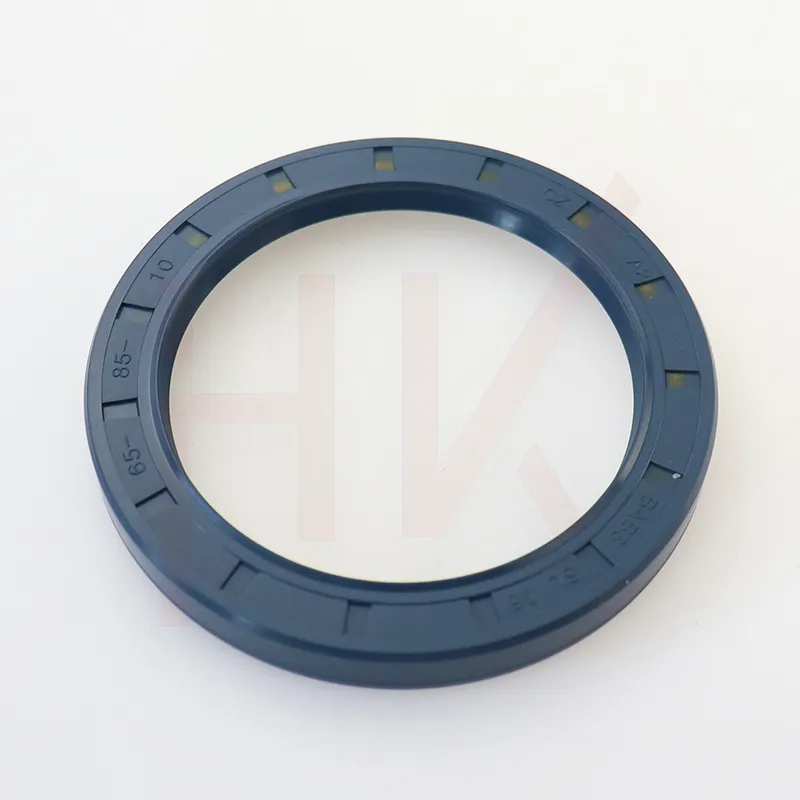Dec . 12, 2024 15:16 Back to list
high pressure oil seals
Understanding High Pressure Oil Seals A Comprehensive Overview
High pressure oil seals play a crucial role in various industrial applications, especially where hydraulic systems are involved. These seals are designed to prevent the leakage of fluids under high pressure while retaining the necessary lubrication for smooth operation. In this article, we will delve into the importance, types, and applications of high pressure oil seals, as well as best practices for their selection and maintenance.
Importance of High Pressure Oil Seals
The primary function of high pressure oil seals is to contain oil or other fluids within a system while preventing external contaminants from entering. This is crucial in hydraulic systems and machinery where failure to contain oil could lead to inefficient performance, increased wear, or even catastrophic failure. High pressure oil seals are engineered to withstand not only high pressure but also extreme temperatures and various chemical environments.
An effective seal contributes to the overall efficiency of equipment. By preventing leaks, high pressure oil seals minimize the loss of lubricants, which can cause overheating and damage to machinery components. This not only enhances the longevity of the equipment but also aids in reducing maintenance costs and downtime, making it a cost-effective solution.
Types of High Pressure Oil Seals
High pressure oil seals come in various designs and materials tailored to specific applications
. The most common types include1. Rotary Oil Seals These are used in rotating shafts, such as those found in motors and pumps. They must efficiently contain lubricants while allowing for some axial movement.
2. Static Seals Designed for fixed components, these seals effectively prevent fluid leakage between stationary parts. They are typically used in flanges and fittings.
3. Lip Seals These are engineered with a flexible lip that conforms to the shaft or component, effectively sealing off fluids while allowing for some motion. They are highly effective in dynamic applications.
high pressure oil seals

4. O-rings A versatile choice, O-rings can be used in a variety of applications. They are circular in shape and provide a reliable seal in static and dynamic environments.
Material selection is also vital to the performance of high pressure oil seals. Common materials include nitrile rubber (NBR), fluorocarbon (FKM), and polyurethane, each offering different levels of resistance to temperature, pressure, and chemical exposure.
Applications of High Pressure Oil Seals
High pressure oil seals are extensively used in numerous industries, including
- Oil and Gas Seals protect equipment such as pumps and compressors in harsh environments. - Aerospace Seals in hydraulic systems ensure safety and performance in flight mechanisms. - Automotive Engines and transmission systems rely on high pressure oil seals for efficiency and durability. - Manufacturing Hydraulic presses and machinery use these seals to maintain operational integrity.
Best Practices for Selection and Maintenance
Choosing the right high pressure oil seal involves understanding the specific requirements of the application, including temperature, pressure, and fluid type. It is essential to consult with manufacturers or industry experts to ensure that the selected seal will perform optimally.
Once installed, regular maintenance is key to extending the life of high pressure oil seals. This includes monitoring for signs of wear, leaks, or damage. In some cases, seals may require replacement if they show persistent issues. Proper installation techniques also matter; a well-fitted seal reduces the risk of premature failure.
Conclusion
High pressure oil seals are integral components that ensure the efficiency and longevity of various machinery and hydraulic systems. Understanding their importance, types, applications, and maintenance practices is essential for any industry reliant on high-pressure systems. By choosing the right seal and maintaining it properly, businesses can enhance operational efficiency, reduce costs, and promote safer working environments. As technology advances, we can expect continued innovations in seal design and materials, further improving their performance and durability in demanding applications.
-
Wiper Oil Seal: Our Commitment to Clean Hydraulics
NewsAug.13,2025
-
Hydraulic Oil Seal for Self Discharging Cars
NewsAug.13,2025
-
Hub Oil Seal for Agricultural Tractor Hubs
NewsAug.13,2025
-
Skeleton Oil Seal with NBR Material
NewsAug.13,2025
-
Rotary Lip Seal for High Pressure Applications
NewsAug.13,2025
-
Cylinder Seal Kits Our Legacy of Hydraulic Trust
NewsAug.13,2025
-
Unlocking the Potential of Hydraulic Systems with Essential Sealing Solutions
NewsAug.06,2025
Products categories
















